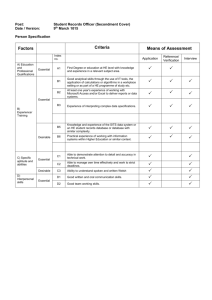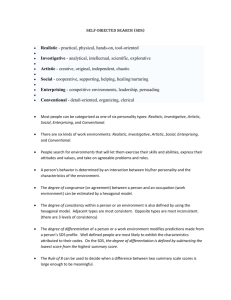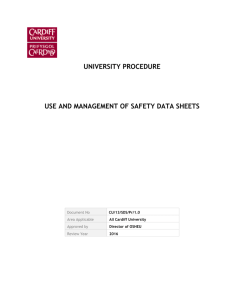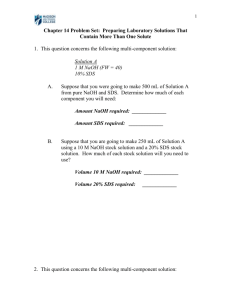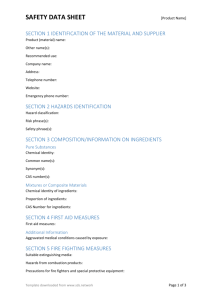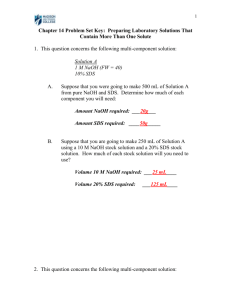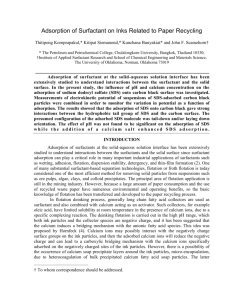etc_2088_sm_SupplData
advertisement
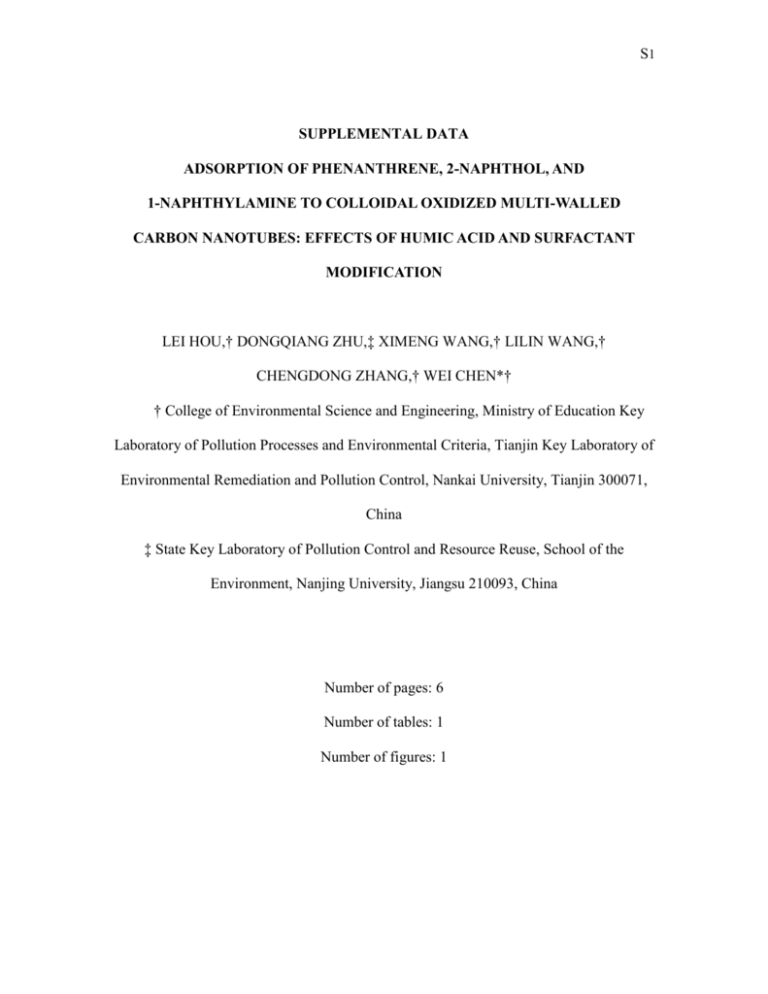
S1 SUPPLEMENTAL DATA ADSORPTION OF PHENANTHRENE, 2-NAPHTHOL, AND 1-NAPHTHYLAMINE TO COLLOIDAL OXIDIZED MULTI-WALLED CARBON NANOTUBES: EFFECTS OF HUMIC ACID AND SURFACTANT MODIFICATION LEI HOU,† DONGQIANG ZHU,‡ XIMENG WANG,† LILIN WANG,† CHENGDONG ZHANG,† WEI CHEN*† † College of Environmental Science and Engineering, Ministry of Education Key Laboratory of Pollution Processes and Environmental Criteria, Tianjin Key Laboratory of Environmental Remediation and Pollution Control, Nankai University, Tianjin 300071, China ‡ State Key Laboratory of Pollution Control and Resource Reuse, School of the Environment, Nanjing University, Jiangsu 210093, China Number of pages: 6 Number of tables: 1 Number of figures: 1 S2 Detailed procedures used to prepare HA- and SDS-modified O-MWNT suspensions Stable suspensions of humic acid (HA) and surfactant (sodium dodecyl sulfate, SDS) modified O-MWNT were prepared using following procedures. A stock solution of HA was prepared by dissolving approximately 300 mg as-received HA powder in 5 mL 0.1 M NaOH solution, and was filtered through a 0.45-μm Millipore membrane filter. Then, it was diluted to approximately 1 g/L using the 0.001 M NaCl background solution, and the pH of the solution was adjusted to neutral. The exact concentration of HA was determined with total organic carbon (TOC) analysis using a high sensitivity TOC analyzer (Shimadzu Scientific Instruments), based on the carbon content provided by the IHSS. This HA solution was further diluted with the background solution to obtain a 60 mg/L working solution of HA, and was used to prepare the HA-modified O-MWNT suspension. A 300 mg/L SDS solution was obtained by dissolving SDS powder in the 0.001 M NaCl background solution. To prepare the HA- or SDS-modified O-MWNT suspension, 200 mg O-MWNT was added to 1 L of 60 mg/L HA solution or 1 L of 300 mg/L SDS solution, and was sonicated at 100 W (Vibra-Cell VCX800, Sonics & Material) for 30 min. Afterward, the suspension was centrifuged at 10000 rpm for 15 min. Then, the upper 75 to 80% of the supernatant was carefully withdrawn and stored. Then, the collected supernatant was dialyzed using a dialysis bag of 6000 to 8000 molecular weight cutoff to remove the freely dissolved HA or SDS from the colloidal O-MWNT suspension, following the procedures of Li et al. [1]. The molecular weight of HA is roughly in the range of 1-5 kDa [2,3]. The molecular weight of SDS is 288, and the total concentration of SDS (300 mg/L) was significantly below the critical micelle concentration (2382 mg/L). Thus, freely dissolved HA or SDS should have been S3 sufficiently removed by repeated dialysis, and essentially all the HA or SDS retained in the dialysis bag was that adsorbed to O-MWNT. X-ray photoelectron spectroscopy (XPS) analysis Surface elemental contents (C, O, N, and S) of the O-MWNT and the three colloidal O-MWNTs were analyzed by X-ray photoelectron spectroscopy (XPS) with an ion-pumped Physical Electronics PHI-1600 ESCA system equipped with a Circumferential analyzer. An Mg Kα anode, operated at 15 kV and 250 W with a photon energy of hν = 1254.6 eV, was used. The base chamber pressure after a bakeout was approximately 5 × 10-10 Torr, and the typical working pressure was approximately 1 × 10-8 Torr. The samples were mounted onto a sample probe with double-sided tape and loaded into the main analysis chamber via a turbo-pumped antechamber. The C 1s core level at 284.6 eV, corresponding to the O-MWNT oxidation state, was used to charge-reference the XP spectra. The XPS data were analyzed using Multipak 8.2 (Copyright © ulvac-PHI Inc, 1994-2006). S4 Table S1. Summary of fitted Freundlich model coefficients (KF and n) obtained from adsorption results. Adsorbate phenanthrene 2-naphthol 1-naphthylamine a KF (L ·mmol1-n·kg-1) a na R2 530±40 0.25±0.01 0.992 O-MWNT-colloid 1400±400 0.38±0.03 0.960 O-MWNT/HA-colloid 920±100 0.44±0.02 0.984 O-MWNT/SDS-colloid 1000±100 0.40±0.01 0.993 O-MWNT 400±30 0.22±0.02 0.942 O-MWNT-colloid 180±20 0.12±0.03 0.762 O-MWNT/HA-colloid 640±200 0.70±0.10 0.937 O-MWNT/SDS-colloid 330±200 0.45±0.20 0.761 O-MWNT 3200±400 0.32±0.05 0.904 O-MWNT-colloid 2900±60 0.22±0.01 0.996 O-MWNT/HA-colloid 800±30 0.22±0.03 0.907 O-MWNT/SDS-colloid 560±50 0.14±0.02 0.820 Adsorbent O-MWNT n Values after sign indicate relative standard deviation. S5 103 phenanthrene q (mmol/kg) q (mmol/kg) 103 102 101 100 10-6 -5 10 10 -4 -3 10 -2 10 -1 10 2-naphthol 102 101 100 10-4 10-3 C (mmol/L) 10-2 10-1 100 101 C (mmol/L) 4 q (mmol/kg) 10 1-naphthylamine O-MWNT O-MWNT-colloid O-MWNT/HA-colloid O-MWNT/SDS-colloid 103 102 101 10-5 10-4 10-3 10-2 10-1 100 C (mmol/L) Figure S1. Adsorption isotherms of phenanthrene, 2-naphthol, and 1-naphthylamine to the non-colloidal O-MWNT, and colloidal O-MWNTs (O-MWNT-colloid, O-MWNT/HA-colloid, and O-MWNT/SDS-colloid). The lines were plotted by curve-fitting the adsorption data with the Freundlich model. S6 REFERENCE 1. Li QL, Xie B, Hwang YS, Xu YK. 2009. Kinetics of C60 fullerene dispersion in water enhanced by natural organic matter and sunlight. Environ Sci Technol 43:3574-3579. 2. Niederer C, Goss K-U. 2007. Quantum chemical modeling of humic acid/air equilibrium partitioning of organic vapors. Environ Sci Technol 41:3646-3652. 3. Chen KL, Elimelech M. 2008. Interaction of fullerene (C60) nanoparticles with humic acid and alginate coated silica surfaces: Measurements, mechanisms, and environmental implications. Environ Sci Technol 42:7607-7614.

